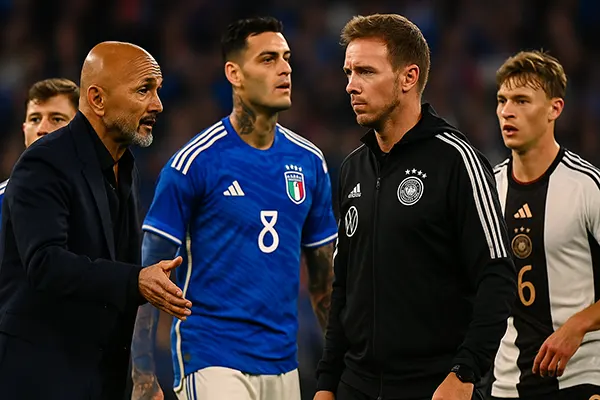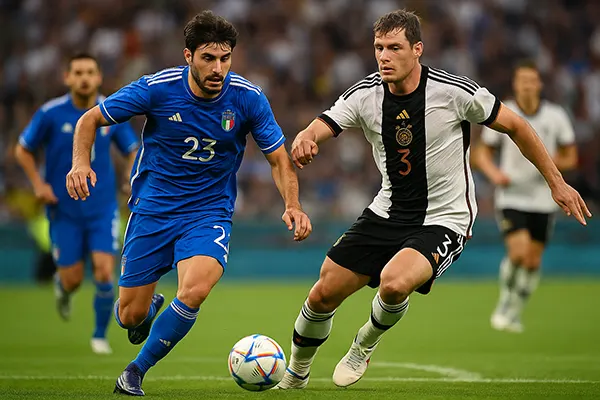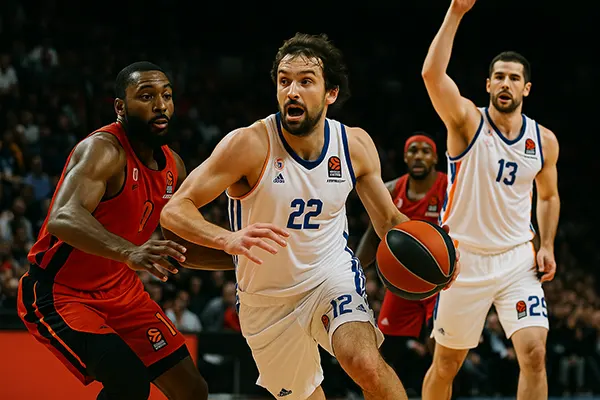Return of the Trendsetters: How Italy and Germany Are Reclaiming Their Tactical Identity

Throughout football history, Italy and Germany have stood as tactical beacons. Yet, in recent decades, both nations have drifted from their defining styles, often chasing trends rather than setting them. As of June 2025, a clear tactical renaissance is underway. Both teams are rebuilding from within, embracing modern demands without abandoning their identities.
Italy’s Tactical Renaissance Under Spalletti
Luciano Spalletti has brought a clear vision to Italy’s national side. Moving away from the rigid, deep-defensive block often associated with the Azzurri, Spalletti integrates positional play with fast vertical transitions. This blend preserves Italian defensive discipline while enabling more dynamic offensive schemes.
His midfield trio often controls tempo with intelligent spacing and rotation. Italy now adapts based on opponent shape, switching between compact 4-3-3 formations and a more flexible 3-5-2 when building out from the back. This duality in structure allows the team to remain unpredictable without losing structure.
The reintroduction of ball-playing centre-backs like Alessandro Bastoni and the rise of aggressive wingbacks such as Destiny Udogie signify Italy’s shift. The strategy is rooted in heritage, yet tuned for the demands of high-intensity pressing and counter-pressing battles in modern football.
New Core, Old Soul: Key Players Leading the Revival
Nicolo Barella and Sandro Tonali have become emblematic of this transition. Their spatial awareness, stamina and ball progression abilities fuel Italy’s midfield dominance. In attack, Gianluca Scamacca’s role as a physical yet technically refined striker aligns well with Spalletti’s system.
Federico Dimarco adds width and final-third creativity, operating almost like an auxiliary winger despite his left-back position. These players are not just tactically flexible — they carry the ethos of Italian football: control, cleverness and calculated aggression.
Italy’s resurgence isn’t just stylistic. Their qualification performance and Nations League form under Spalletti have showcased consistent dominance over varied opposition. Defensive integrity remains intact, but now, it’s a launchpad rather than a refuge.
Germany’s Recalibration Through Youth and Structure
Germany’s shift has been both philosophical and structural. Following the underwhelming 2022 World Cup and a disappointing Euro 2024, the DFB appointed Julian Nagelsmann as permanent head coach. His brief was simple: modernise without compromising the core traits of German football — discipline, pressing, and verticality.
Nagelsmann has blended gegenpressing with intelligent in-possession mechanisms. A renewed focus on automation in player movement and space exploitation has turned Germany into a more fluid unit. Players are no longer bound by roles but by zones and sequences.
The introduction of younger talents like Florian Wirtz and Jamal Musiala has redefined the attacking third. Their ability to operate between lines and execute under pressure brings back memories of the technical freedom of the 2014 generation — but with added pace and unpredictability.
Tactical Modernity Backed by Traditional Efficiency
The German backline under Nagelsmann features aggressive positioning, with Antonio Rüdiger stepping high and Joshua Kimmich occasionally dropping deep as an inverted full-back. This grants freedom to wide forwards and central midfielders alike.
The use of double-pivot systems, often featuring Emre Can or Pascal Groß, ensures defensive protection without sacrificing ball circulation. Germany have revived their legacy of dominance by turning systemic discipline into an advantage rather than a limitation.
The 2025 UEFA Nations League has seen Germany adopt possession-heavy patterns in some matches, and pressing-heavy structures in others. This dynamic adaptability, coupled with emotional intensity, points towards a side rediscovering both its style and spirit.

Parallel Roads: Converging Ambitions on the Global Stage
While their methods differ, Italy and Germany share a common goal: restoring their influence in world football. Both sides have identified the need to modernise not just tactics, but also football culture, youth development, and coaching methodologies.
In Italy, Serie A clubs have started investing in data-driven coaching and technical directors with a broader tactical horizon. Meanwhile, Germany’s “DFB-Akademie” has revised its curriculum to prioritise decision-making, spatial awareness, and tactical autonomy from youth levels upwards.
Importantly, both nations have chosen to stay grounded in their roots. Italy’s emphasis on strategic defending and Germany’s legacy of intensity and order remain the backbone. The difference now is the confidence to innovate rather than imitate.
What This Means for the Next Generation
The tactical identity being built today will shape the next generation of European footballers. Young Italians are now expected to be both technically secure and positionally intelligent, while Germans are groomed for versatility and tactical fluency.
UEFA’s reforms to youth tournaments and changes in national team selection philosophies reflect this paradigm shift. Both Italy and Germany are aligning themselves not only to current trends but also to sustainable, long-term success strategies.
Come the 2026 World Cup, these efforts could converge into a showcase of evolved tradition. Should the trend continue, both nations may not only return to glory — they could redefine what elite international football looks like in the next decade.






